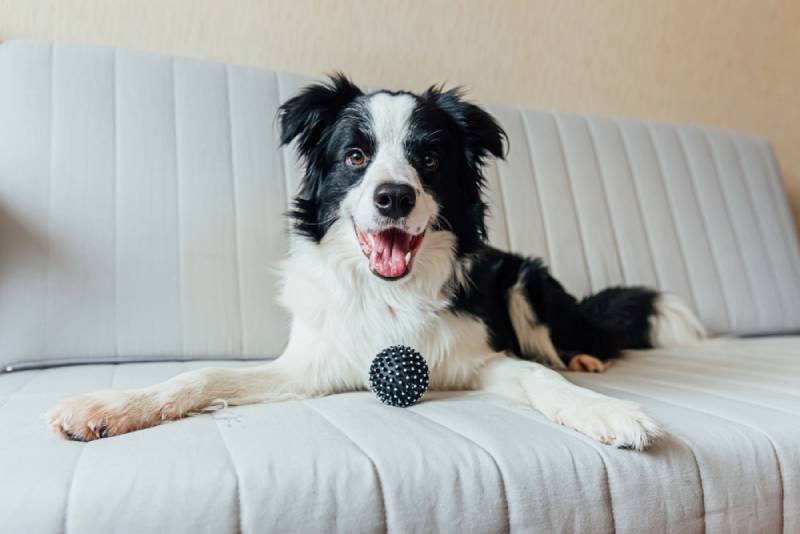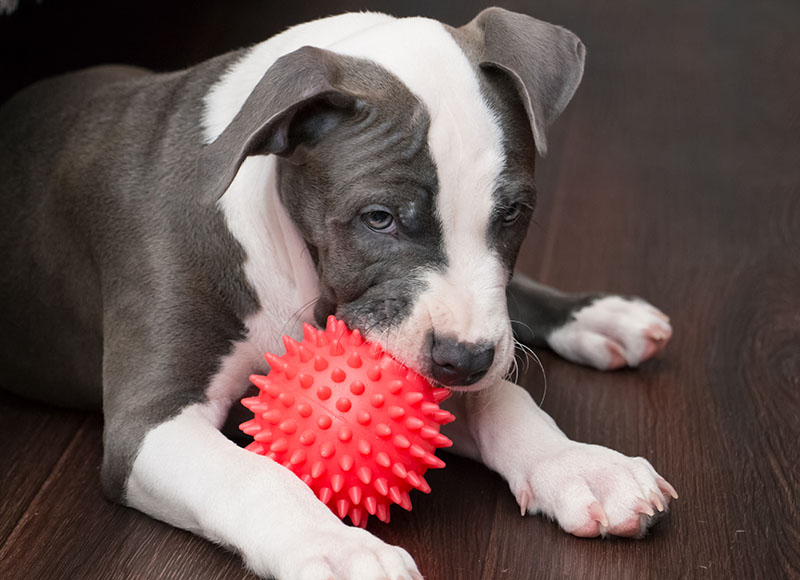
All dogs are different. Some are territorial and aggressive; others are cute and friendly. But the one thing that all canines have in common is their wits. Dogs are intelligent animals, and they have an excellent sense of object permanence. For example, if you launch a ball underneath the bed, the four-legged bud will follow it!
How do dogs compare to cats, birds, and other animals, though? Can you help them perfect their tracking skills? Does a human baby match the cognitive abilities of a pup? These are just some of the questions that we’ll answer in this post. So, join us, and let’s dive into the exciting world of object permanence in dogs!
What Is Object Permanence & Why Is It Important?
Object permanence allows us to memorize people, objects, places, and events. This way, they know that things still exist in the world even though they’re not in their line of sight or making any noises. In contrast, if the mind hasn’t yet developed object permanence, they won’t be able to remember that object once it’s taken away.
This cognitive ability is essential for the development of the brain’s social and mental capabilities. OP enables dogs to create mental images, memorize them, and use them to their advantage. Object permanence works similarly in a wide range of species that inhabit the Earth, including cats, dogs, and humans.

Do Canines Understand the Permanence of Objects?
The short answer is yes, they most certainly do. If you’ve ever owned a doggo, we bet you’ve already experienced this dozens of times. Here’s how it works: you hide a treat, Frisbee, chasing ball, or rope toy, and the doggo tries (and often does) to find it. The pet understands clearly that the object of interest is still there somewhere, although it can’t be seen at the moment.
In other words, the dog can remember the qualities of objects (both simple and complex) that go invisible. This is interesting: the mind of a wolf is closely related to that of a dog. They both embrace the second and third stages in cognitive development when they’re less than three months.
How Good Are They at Recognizing Hidden Items?
Dogs are roughly as good at OP as human babies (up to two years old). With proper training, they can find treats that are covered by one or two containers and rotated. Speaking of rotation, most canines easily handle 90°. However, they struggle at 180° and think that the snack is still in the same spot as it was before the rotation started.
Dogs lose track of the object when they can’t see the direction of the rotation (90 or 180 degrees). In contrast, when the container doesn’t move and the dog is instead told to walk around the planks that hold the containers, they always succeed. Now, the treat can be put in any vessel, be it a cup or a bucket. It just has to be invisible and not “give itself up” with a smell.
Can Dogs Do This With the Lights Off?
If we increase the difficulty of the test and conduct it in a dark room, the results will be much worse. The reason: dogs keep an eye on the location of the bucket with the prize – that’s how they find it later. Also, when there’s a delay in the process (the planks don’t move for 3–4 minutes), that also makes the canine’s job a lot harder.
Certain pooches don’t seem to be confused by that, though. More than that, clever dogs can remember things that are hidden behind a screen. For example, if you put a treat behind a screen and then replace it with a similar one (but slightly different in size, shape, and color), the pet will be able to tell the difference.

Which Animals Excel at Object Permanence?
Non-human primates like the Japanese macaque do a decent job of keeping track of objects that disappear in front of their eyes. However, the macaque always tries to find the target using practical tools and techniques. In contrast, gorillas apply mental representation, which means they’re capable of following the invisible displacements of an object and realizing when something is hidden.
And what about cats, though—are they smarter than primates? Not quite: cats are, of course, able to “keep tabs” on objects, but their ability for OP is not as developed as in dogs. As for birds, magpies and crows are among the smartest creatures to ever go through these cognitive tests. Just like dogs, they think and act like a human infant does.
What About Human Babies?
Alright, now that we covered dogs, primates, and crows, let’s talk about our own species. So, when does object permanence develop in a human child? In most toddlers, this concept starts to kick in when they reach eight months of age. However, today, many psychologists and doctors believe that babies obtain this cognitive skill at 4–7 months old. Sometimes, it takes a bit longer.
One thing is for sure, though: if you hide a toy under a bed or a pillow, and the kiddo finds it, that means they have mastered OP. Even if they fail at the attempt, that’s still a clear indication of object permanence. Children reach the final, sixth stage of OP at 18–24 months. That’s when they can create mental images and use them to locate objects and achieve other goals.

 A Quick Guide to Keeping Your Dog Mentally Healthy
A Quick Guide to Keeping Your Dog Mentally Healthy
Like most pets, dogs rely heavily on mental stimulation to stay happy. If you let separation anxiety take over, that will lead to destructive behavior, mood swings, and even health issues. So, how do you take proper care of a dog’s emotional and psychological well-being?
Conclusion
Dogs are often compared to human babies, and for good reason: they’re just as cute and curious! And much like toddlers, canines have a sense of object permanence that helps them remember invisibly displaced items. As we learned today, they match the mind of a two-year-old child. Dogs use OP to play games like fetch, solve puzzles, and retrieve toys.
Now, gorillas and crows might be slightly better at understanding object permanence, but that doesn’t prevent our fluffy companions from being extraordinary K9 officers, search-and-rescuers, and service dogs. So, make sure to play plenty of intelligent games with your pooch, stimulate their brain with positive reinforcement, and keep them well-fed!
Featured Image Credit: Julia Zavalishina, Shutterstock
The post Do Dogs Have Object Permanence? Vet-Reviewed Facts & FAQ appeared first on Pet Keen.



 A Quick Guide to Keeping Your Dog Mentally Healthy
A Quick Guide to Keeping Your Dog Mentally Healthy